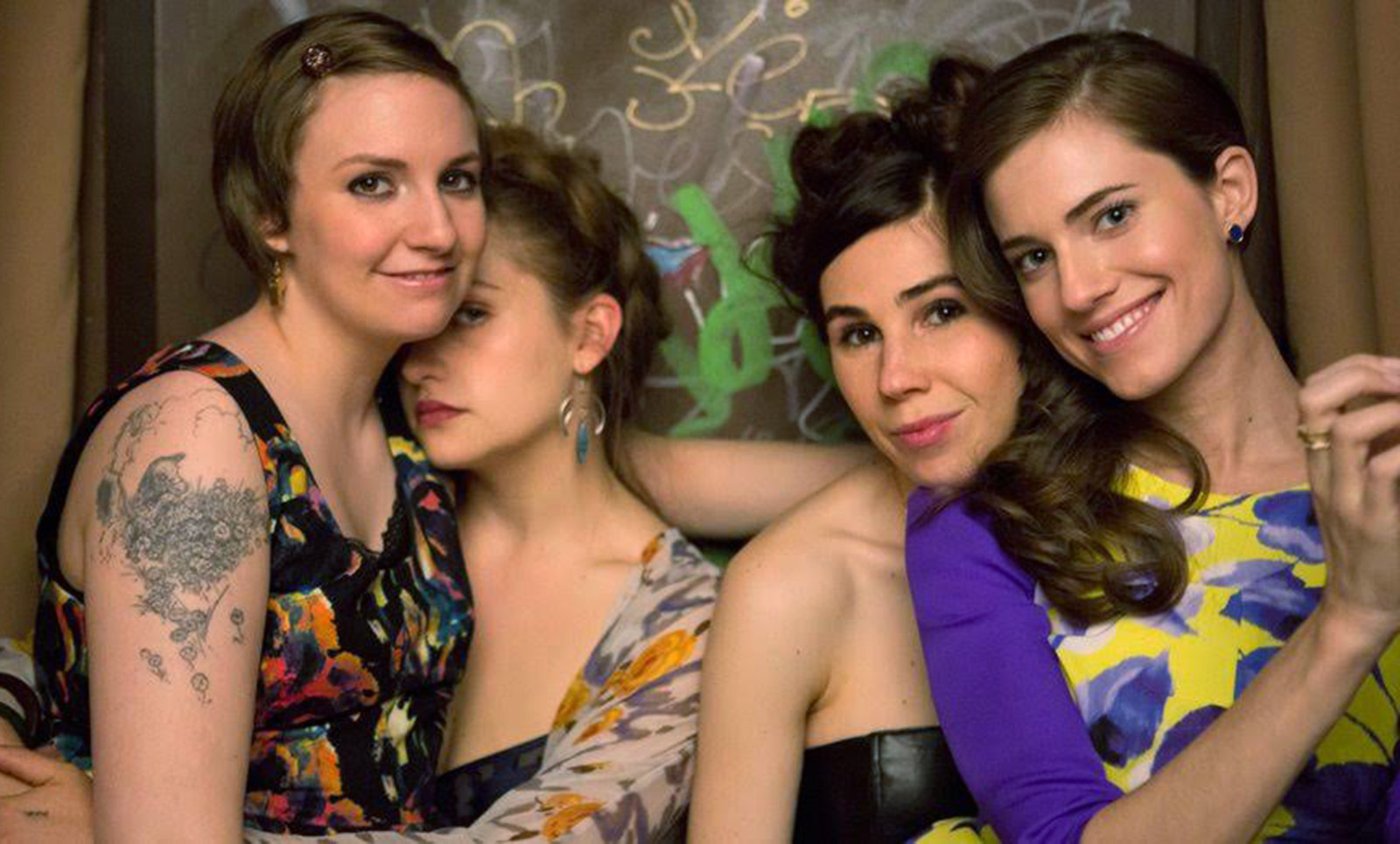Second Take: Lena Dunham’s ‘Girls’ offers fresh take on modern womanhood

HBO’s “Girls” documents the lives of four friends as they navigate their 20s in a search for their identities. Creator Lena Dunham (first from left) stars as Hannah, a struggling author with obsessive-compulsive disorder who wishes to break free from her overbearing parents and live her life on her own terms. (Courtesy of HBO)
By William Thorne
Jan. 8, 2016 1:15 a.m.
I never thought I would see someone purposefully ram a Q-tip in her ear just so she can feel sorry for herself. Nor did I imagine I would be laughing at a kinky sex scene in which a girl stares fixedly at a creepy doll.
Yet the weird and wonderful HBO show “Girls,” created by and starring Lena Dunham, has somehow managed to make such moments captivating, not cringeworthy, like other shows of its kind.
As I eagerly anticipated the quirky show’s fifth season premier on Feb. 21, I was at first sad to hear HBO announce Wednesday that Dunham’s TV show is officially coming to an end after its sixth season. However, upon reflection, it’s probably the right time to bring the show to an end.
Dunham has had plenty of opportunities to explore her creativity and, as she moves into her thirties, the comedian herself admitted it’s the right time to wrap up the series.
With the end of “Girls” in sight, the TV world will say goodbye to a show which has entertained audiences and changed comedy.
The show primarily follows the lives of four twenty-something-year-old girls living in New York City. At the center is Hannah (Lena Dunham), a struggling author with obsessive-compulsive disorder whose wild insecurities lead her to do almost anything for sympathy and attention, and her college friend Marnie (Allison Williams), an assistant at an art gallery whose on-and-off relationship with her boyfriend Charlie (Christopher Abbott) veers from heartfelt reconciliations to spiteful revenge sex. The pair teams up with Jessa (Jemima Kirke), a sassy, party-loving Brit whose life is an endless gap year, and Shoshanna (Zosia Mamet), an innocent valley girl whose life philosophy clearly comes from watching “Mean Girls” and who is tormented by her inability to lose her virginity.
Together, this apparently ragtag cluster of girls wreaks emotional chaos upon both the other characters and the viewers. But through the havoc, the show grasps at its central theme: the identity struggles of millennial women.
Each of the girls is bugged by requirements or norms placed on young women in the 21st century. For Marnie, it’s the pressure to maintain a job while being ogled by most men she meets; for Jessa, it’s being compelled by society to settle down although all she wants to do is travel and have wild adventures; for Shoshanna, it’s fighting the stigma of being a virgin in her early twenties; and for Hannah, it’s breaking free from the demands of her overbearing parents and living her own life.
Whereas many comedies would use the incident of the lead character becoming partially deaf as a key plot point, the event turns out to be only one in a long string of actions aimed at a thematic build-up in “Girls.” Hannah’s frustration at not producing the kind of novel she wants and not being able to find a stable, sane boyfriend builds up and overflows into actions like rupturing her eardrum.
Shows like “Girls” defy the conventionalities of scripted comedy by exploring themes of womanhood in a unique way. They start off with the similar concept of friends living together pioneered by “Friends” and turn it on its head. Instead of the apartment being a cozy, chummy environment for people like Joey and Chandler to seek refuge, “Girls” seeks to make its characters’ lives feel as unstable as possible. “Girls” is like three cans of Red Bull before a night out while “Friends” is hot chocolate tucked under a blanket on the couch.
Once viewers get to know the characters, the momentary shock factor is replaced by a reassuring familiarity. When Hannah is violently thrashing around in a club while spending a night out high on cocaine, wearing nothing on top but a fluorescent yellow gauze shirt, at first I thought, “I can’t believe she’s wearing that.” But when I remembered all the other crazy things she’d done, the scene made sense. It perfectly captured both her character and the show’s spontaneity.
The way to watch “Girls” is not to be closed-minded and judgmental, but to open oneself up to Lena Dunham’s creations. Let their painfully awkward, squirm-inducing yet relatable adventures wash over you. “Girls” has helped change the TV comedy landscape and has explored a serious, modern theme in a wildly outlandish way. Lena Dunham should be thanked for that.
– William Thorne

